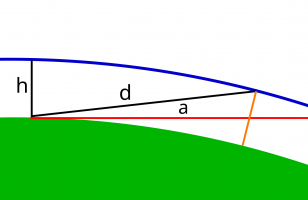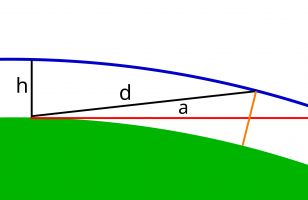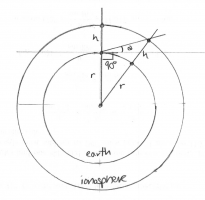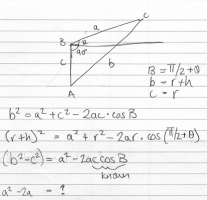Hi, I write software that visualizes radio propagation signals. I would like to know how to calculate the distance to a layer in the ionosphere for a radio signal radiated at a specific angle from the tangent (i.e. an angle above the horizon).
Assumptions: Earth is a spherediameter radius (?) 6,386 km
Inputs:
Many thanks, Mark.

Assumptions: Earth is a sphere
Inputs:
- 'a': angle of radiation above the tangent at the station location.
- 'h': Height of ionospheric layer above the Earth's surface, e.g. 400km
- 'd': distance to ionosphere layer of height 'h' of a radiated signal at angle 'a'.
Many thanks, Mark.

Last edited by a moderator:




